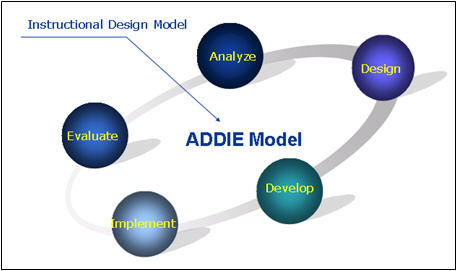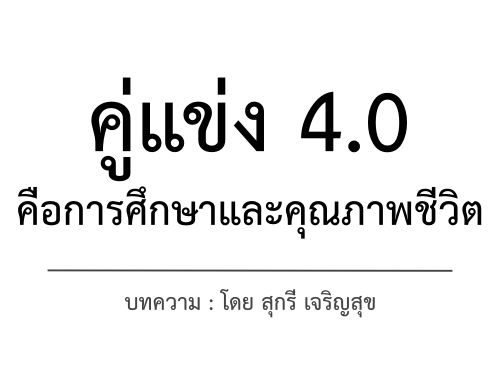ชื่อเรื่อง การพัฒนารูปแบบการสอนโดยใช้สมองเป็นฐานร่วมกับการสอนแบบ SQ4R เพื่อส่งเสริม ความสามารถในการอ่านภาษาอังกฤษสำหรับนักเรียนชั้นมัธยมศึกษาปีที่ 1
ผู้วิจัย กนิษฐา สุขมาก
ปีที่ทำวิจัย 2560
บทคัดย่อ
การวิจัยครั้งนี้มีวัตถุประสงค์เพื่อ 1) ศึกษาข้อมูลพื้นฐานสำหรับการพัฒนารูปแบบการสอนโดยใช้สมองเป็นฐานร่วมกับการสอนแบบ SQ4R เพื่อส่งเสริมความสามารถในการอ่านภาษาอังกฤษสำหรับนักเรียนชั้นมัธยมศึกษาปีที่ 1 2) ออกแบบและพัฒนารูปแบบการสอนโดยใช้สมองเป็นฐานร่วมกับการสอนแบบ SQ4R เพื่อส่งเสริมความสามารถในการอ่านภาษาอังกฤษสำหรับนักเรียนชั้นมัธยมศึกษาปีที่ 1 3) ทดลองใช้รูปแบบการสอนโดยใช้สมองเป็นฐานร่วมกับการสอนแบบ SQ4R เพื่อส่งเสริมความสามารถในการอ่านภาษาอังกฤษสำหรับนักเรียนชั้นมัธยมศึกษาปีที่ 1 และ 4) ประเมินผลรูปแบบการสอนโดยใช้สมองเป็นฐานร่วมกับการสอนแบบ SQ4R เพื่อส่งเสริมความสามารถในการอ่านภาษาอังกฤษสำหรับนักเรียนชั้นมัธยมศึกษาปีที่ 1
การวิจัยครั้งนี้ ดำเนินการตามกระบวนการวิจัยและพัฒนา (Research and Development) แบ่งเป็น 4 ขั้นตอนคือ ขั้นตอนที่ 1 ศึกษาข้อมูลพื้นฐานเกี่ยวกับสภาพปัญหาในการเรียนรู้และความสามารถในการอ่านภาษาอังกฤษและสภาพการจัดการเรียนการสอนทักษะการอ่านภาษาอังกฤษของครูผู้สอนโรงเรียนในสังกัดเทศบาลเมืองราชบุรี และศึกษาแนวคิดที่เกี่ยวข้อง ขั้นตอนที่ 2 ออกแบบและพัฒนารูปแบบการสอนและเอกสารประกอบรูปแบบการสอน โดยผู้เชี่ยวชาญจำนวน 5 ท่านและทดลองนำร่องเพื่อพิจารณาความเป็นไปได้กับนักเรียนที่ไม่ใช่กลุ่มตัวอย่าง จำนวน 30 คน ขั้นตอนที่ 3 ทดลองใช้รูปแบบการสอน โดยนำไปทดลองใช้กับนักเรียนชั้นมัธยมศึกษาปีที่ 1 จำนวน 40 คน ขั้นตอนที่ 4 ประเมินผลรูปแบบการสอนโดยสอบถามความพึงพอใจของครูผู้สอนภาษาอังกฤษในโรงเรียนสังกัดเทศบาลเมืองราชบุรี โรงเรียนละ 1 คน รวม 5 คน
ผลการวิจัยพบว่า
1. ผลการศึกษาข้อมูลพื้นฐานสำหรับการพัฒนารูปแบบการสอน พบว่า นักเรียนมีทัศนคติที่ไม่ดีต่อวิชาภาษาอังกฤษ มีปัญหาในการอ่านภาษาอังกฤษ ขาดความมั่นใจในการอ่าน ไม่สามารถแปลความหมายของคำศัพท์ได้ ต้องการให้ครูปรับเปลี่ยนรูปแบบการเรียนการสอนหรือวิธีจัดกิจกรรมให้น่าสนใจกว่านี้ ครูผู้สอนใช้เนื้อหาในสื่อการเรียนการสอนจากสำนักพิมพ์ต่างๆ ครูผู้สอนไม่ได้ออกแบบเนื้อหาในการจัดการเรียนการสอนเอง แต่ยังคงรูปแบบเดิมๆ ผลการศึกษาแนวคิดที่เกี่ยวข้อง พบว่า การสอนโดยใช้สมองเป็นฐาน (Brain based Learning) เป็นการจัดการเรียนการสอนเพื่อช่วยให้ผู้เรียนมีความสามารถในด้านต่างๆ โดยออกแบบกิจกรรมการเรียนการสอนร่วมกับเทคนิควิธีสอนและสิ่งสนับสนุนต่างๆ ที่เป็นการสร้างบรรยากาศและสิ่งแวดล้อมทางการเรียนให้ผู้เรียนรู้สึกผ่อนคลายและสนใจที่จะเรียนรู้ โดยจัดกิจกรรมผ่านประสาทการรับรู้ทางการฟัง การดูและการเคลื่อนไหว และเป็นการส่งเสริมให้ผู้เรียนใช้กระบวนการคิด ส่วนการศึกษาแนวคิดเกี่ยวกับการสอนแบบ SQ4R พบว่าเป็นการสอนที่ช่วยพัฒนาความเข้าใจในการอ่าน เป็นเทคนิคการสอนอ่านอย่างคร่าวๆ เพื่อให้ได้คำตอบดังที่ตั้งไว้ ลักษณะการสอนจะเน้นให้นักเรียนได้ศึกษาด้วยตนเอง เน้นการอ่านซ้ำๆ จนกว่าจะเข้าใจเนื้อเรื่องที่อ่าน ครูผู้สอนจะต้องตระหนักถึงความรู้เดิมของผู้เรียนหรือจะต้องปูพื้นฐานเดิมให้กับผู้เรียนก่อนที่จะถึงบทเรียนนั้น อีกอย่างที่ผู้สอนควรคำนึงถึงคือต้องเข้าใจว่าการอ่านเป็นการอ่านเพื่อเนื้อหาสาระ มิใช่สนใจที่ตัวภาษาแต่ในกรณีที่สอนชั้นประถมศึกษาหรือมัธยมศึกษาตอนต้น ผู้สอนต้องให้ความสนใจการวัดความรู้เรื่องคำศัพท์และการใช้ภาษาด้วย
2. รูปแบบการสอนที่พัฒนาขึ้น คือ รูปแบบการสอนโดยใช้สมองเป็นฐานร่วมกับการสอนแบบ SQ4R เพื่อส่งเสริมความสามารถในการอ่านภาษาอังกฤษสำหรับนักเรียนชั้นมัธยมศึกษาปีที่ 1 มีองค์ประกอบ 5 องค์ประกอบ ได้แก่ 1) หลักการ 2) วัตถุประสงค์ 3) เนื้อหา 4) กระบวนการจัดการเรียนรู้ มี 5 ขั้นตอน คือ ขั้นกระตุ้นความคิด (Rouse and Encourage : R) ขั้นเชื่อมโยงประสบการณ์ (Experience Linking : E) ขั้นอ่านอย่างไตร่ตรอง (Accurate Reading : A) ขั้นสะท้อนบทเรียน (Drills Activities : D) ขั้นแลกเปลี่ยนเรียนรู้ (Share Ideas : S) และ 5)การวัดและประเมินผล การตรวจสอบคุณภาพของรูปแบบการสอนโดยผู้เชี่ยวชาญ พบว่ามีความเหมาะสมโดยรวมอยู่ในระดับมากที่สุด ( = 4.60 , S.D. = 0.09) ผลการทดลองนำร่องเพื่อศึกษาความเป็นไปได้ พบว่า รูปแบบการสอนมีประสิทธิภาพเท่ากับ 80.58 /80.89 ซึ่งเป็นไปตามเกณฑ์ที่กำหนด และยังพบว่า กิจกรรมตามกระบวนการเรียนการสอนของรูปแบบการสอนที่พัฒนาขึ้นมีระบบเป็นขั้นตอน สามารถดำเนินการจัดกิจกรรมการเรียนการสอนได้อย่างต่อเนื่อง
3. ผลการทดลองใช้รูปแบบการสอน พบว่า ความสามารถในการอ่านภาษาอังกฤษของนักเรียนชั้นมัธยมศึกษาปีที่ 1 หลังเรียนด้วยรูปแบบการสอนโดยใช้สมองเป็นฐานร่วมกับการสอนแบบ SQ4R สูงกว่าก่อนเรียนอย่างมีนัยสำคัญทางสถิติที่ระดับ .01 และนักเรียนมีความพึงพอใจต่อการเรียนด้วยรูปแบบการสอนโดยรวมอยู่ในระดับพึงพอใจมาก ( = 4.44, S.D. = 0.04)
4. ผลการประเมินรูปแบบการสอนพบว่า ครูผู้สอนมีความพึงพอใจต่อรูปแบบการสอนโดยใช้สมองเป็นฐานร่วมกับการสอนแบบ SQ4R โดยรวมอยู่ในระดับพึงพอใจมากที่สุด ( = 4.94, S.D. = 0.05)
Title The Development of Instructional Model Based on Brain based Learning and SQ4R to Enhance English Reading Ability for Matthayomsuksa 1 Students
Researcher Kanittha Sukmak
Year of research 2017
ABSTRACT
The purposes of this research were 1) to study the basic data for developing the instructional model based on Brain based Learning and SQ4R to enhance English reading ability for Matthayomsuksa 1 students 2) to design and develop the instructional model based on Brain based Learning and SQ4R to enhance English reading ability for Matthayomsuksa 1 students 3) to implement the instructional model based on Brain based Learning and SQ4R to enhance English reading ability for Matthayomsuksa 1 students and 4) to evaluate the instructional model based on Brain based Learning and SQ4R to enhance English reading ability for Matthayomsuksa 1 students.
The research procedure comprised 4 steps of research and development processes ; 1) to study the basic data about students learning problems, English reading ability and English reading teaching management of English teachers in schools under Ratchaburi Municipality and related theory 2) to design and develop the instructional model and materials, were inspected the quality by 5 experts and implemented at pilot study with 30 students for feasibility 3) to implement the instructional model with 40 Matthayomsuksa 1 students and 4) to evaluate the instructional model by study the satisfaction of 5 English teachers from 5 schools under Ratchaburi Municipality.
The results of this research indicated that :
1. The study of the basic data for developing the instructional model were found that students had negative attitudes towards English subject, they also had some problems in English reading, lack of confidence in reading. Other barrier was their inadequate vocabulary. Students needed the instructional model development or more interesting activities from the teachers. Teachers used contents from publishers instead of design their own. The results of related theory were found that Brain based learning was a theory of teaching and learning strategy that help learners in various fields by designing teaching and learning techniques with supporting materials which made the atmosphere and environment more relaxing and interesting to learn. Brain based learning promoted thinking process by using the three main sensory receivers; visual, auditory and kinesthetic. While SQ4R was the teaching technique which developed the reading comprehension, an easy English reading teaching technique to find the answer. The teaching would focus on self study, emphasizing repeated reading until student understand the content that they read. Teacher must be aware of the students prior knowledge before the next lesson and the teacher also should be reminded to evaluate the knowledge of vocabulary and language usage for students in primary and secondary level.
2. The developed instructional model consisted of 5 components as the following : 1) principles 2) objectives 3) contents 4) learning processes and 5) measurement and evaluation.
The learning processes were 1) rouse and encourage (R) 2) experience linking (E) 3) accurate reading (A) 4) drills activities (D) and 5) share ideas (S). The quality of the instructional model checked by the experts was appropriate at the highest level. ( = 4.60, S.D. = 0.09) while the results of possibility pilot study revealed that the efficiency was 80.58/80.89 and the learning processes were systematic and continuously.
3. The implementation showed that English reading ability of Matthayomsuksa 1 students after learning by the instructional model was significantly higher than before learning at the .01 level and the students satisfaction towards studying by the instructional model was at a high level. ( = 4.44, S.D. = 0.04)
4. The evaluation of the instructional model found that the English teachers satisfaction was at the highest level. ( = 4.94, S.D. = 0.05)


 ค้นหาทุกอย่างในเว็บครูบ้านนอก :
ค้นหาทุกอย่างในเว็บครูบ้านนอก :































